- Home
- Rick Mofina
Full Tilt Page 2
Full Tilt Read online
Page 2
“Hey, Ed,” Dickson said. “We heard she didn’t make it.”
“No,” Brennan said before shifting to work. “What do we have so far?”
Consulting their notes, Dickson and Martin brought him up to speed. The fire had cooled enough for the forensic guys to suit up. At the same time, Brennan heard a yip and saw the cadaver dog, and its handler in white coveralls and shoe covers, head carefully into the destruction while, overhead, a small plane circled. The state police were taking aerial photos of the scene and mapping it.
“The teens who found her are asleep in my car, waiting to talk to you,” Martin told Brennan.
“Okay, I’ll get to them in a bit for formal statements.”
The barn was state property built in 1901 as part of the farm that grew food for the asylum before it was shut down in 1975 and abandoned.
Brennan took in the piles of rubble, the stone foundation and watched Trooper Dan Larco with Sheba, a German shepherd, probing the scene. As she poked her snout here and there in the blackened debris, her tail wagged in happy juxtaposition to the grim task.
Sheba barked and disappeared into a tangle of wood at one corner. Larco moved after her, lowering himself to inspect her discovery.
“Hey, Ed!” he called. “We got something! Better take a look!”
Brennan pulled on coveralls and shoe covers, then waded cautiously into the wreckage.
The charred victim was positioned on its back beneath a web of burned timber. Most of the skin and clothing were gone. The arms were drawn up in the “pugilistic attitude.” The face was burned off, exposing teeth in a death’s head grin. From the remnants of jeans and boots on the lower body, it appeared the victim was male.
Brennan made notes, sketched the scene and took pictures. The forensic unit would process everything more thoroughly. Maybe they’d yield a lead on identification. In any event, there would be another autopsy.
Now we have two deaths. Is this what the first victim meant when she’d said, “There are others”?
Larco’s radio crackled with a transmission from the spotter in the plane.
“There’s a vehicle in the bush about fifty to sixty yards northeast of the site. A pickup truck, you guys got that?”
A quick round of checks determined that no one on the ground was aware of the vehicle. Two state patrol cars moved to block it. Brennan, Dickson, Martin and some of the troopers approached the vehicle. They took up positions around it with weapons drawn and called out for anyone inside to exit with hands raised.
There was no response.
They ran the plate. The pickup was a late-model Ford F-150, registered to Carl Nelson of Rampart. There were no warrants, or wants for him. A quick, cautious check confirmed the truck was empty. Brennan noticed the rear window bore a parking decal for the MRKT DataFlow Call Center.
He pulled on latex gloves and tried the driver’s door.
It opened.
A folded single sheet of paper waited on the seat.
Brennan read it:
I only wanted someone to love in my life.
It’s better to end everyone’s pain.
God forgive me for what I’ve done.
Carl Nelson
CHAPTER 4
Rampart, New York
“Yeah, that’s Carl’s truck. What’s wrong?”
Robert Vander’s eyes flicked up from the pictures Brennan showed him on his phone and he snapped his gum.
“Carl’s been off sick, why’re you asking about him?”
Vander glanced quickly at his computer monitor, a reflex to the pinging of new messages. He was the IT chief at the MRKT DataFlow Call Center, which handled millions of accounts for several credit card companies. With five hundred people on the payroll, it was Rampart’s largest employer.
Vander was Carl Nelson’s supervisor.
“What’s this about?” Vander looked at Brennan, who sat across from his desk, then at Paul Dickson, who was beside Brennan, taking notes.
“We’re checking on his welfare,” Brennan said.
Vander halted his gum chewing.
“His welfare? He called in sick two days ago, said he had some kind of bug. What’s going on?”
Brennan let a few moments pass without answering.
“Mr. Vander, can you tell us about Mr. Nelson? What he does here, his character?”
“His character? You’re making me nervous.”
“Can you help us?”
“Carl’s been with MRKT about ten years. He’s a senior systems technician, a genius with computers. He helped design the upgrade for our security programs. He’s an excellent employee, very quiet and keeps to himself. I got nothing but good things to say about him. I’m getting a little worried.”
“Has he been under any stress lately?”
“No, nothing beyond the usual workload demands.”
“What’s his relationship status? Married, divorced, girlfriend, boyfriend?”
“He’s not married. I don’t think he has a girlfriend, or partner, whatever.”
Vander repositioned himself in his chair.
“Do you know if he has any outstanding debts?”
“No, I wouldn’t know.”
“Does he gamble? Use drugs or have any addictions?”
“No. I don’t think—You know, I’m not comfortable with this.”
“Would you volunteer a copy of his file to us?”
“Not before I check with our human resources and legal people.” Vander’s mouse clicked. “I think you need a warrant.”
“That’s fine. Thank you for your help.”
Brennan and Dickson got up to leave.
“Wait,” Vander stood, his face whitened. “Would this have something to do with that story about the fire killing two people at the old cemetery?”
Brennan let a moment pass.
“Mr. Vander, we can’t confirm anything and we strongly urge you to keep our inquiries confidential.”
* * *
Later, as Dickson drove them from the center, he was frustrated at where things stood in the thirty-six hours since the fire was discovered.
They’d talked to Robbie and Chrissie, the two teens who’d called it in, and got repetitions of what they already knew.
“We’ve still got nothing on our Jane Doe. Nothing more on our John Doe—slash Carl Nelson. We’ve got his note, his truck. There’s no activity at his residence and he’s not at work. We know it’s him. This is a clear murder-suicide, Ed. When’re we going to get warrants and search his place for something to help identify the woman and clear this one?”
Brennan was checking his phone for messages.
“We’ll get warrants once we confirm his identity. Let’s go to the hospital. Morten wants to see us, maybe he’s got something.”
* * *
Morten Compton, Rampart’s pathologist, was a large man with a Vandyke who was partial to suspenders and bow ties.
He was pulling on his jacket when Brennan and Dickson arrived. His basement office in the hospital smelled of antiseptic and formaldehyde.
“Sorry, fellas, I got to get to Ogdensburg.” Compton tossed files into his briefcase. “I’m assisting the county with the triple bar shooting there and I got the double fatal with the church van and the semi in Potsdam.”
“So why call us over, Mort?” Brennan asked. “Have you made any progress with either victim in my case?”
“Some, but first you have to appreciate that confirming positive IDs will take time, given the condition of the bodies and the backlog my office is facing. My assistant is in Vermont attending a funeral. I’m arranging for help from Watertown.”
“So where are we on my double?”
“We’ve submitted dental ch
arts for the female and male to local and regional dentists and dental associations. Toxicology has gone to Syracuse and we’ve submitted DNA to the FBI’s databank.”
“That’s it?”
“Well, I don’t think the male died in the fire.”
“That’s new. What’s the cause for him?”
“Possibly a gunshot wound to the head. I just recovered a round, looks like a nine millimeter. You need to find a gun at the scene, Ed.”
* * *
As they drove to the scene, Dickson raised more questions.
“So how does a dead man start a fire, Ed?”
“Maybe he didn’t start it. Or, maybe he tied her up, started it, then shot himself in front of her, leaving her to burn to death.”
“If he wanted to end things, like the note suggests, why not shoot the woman first? Make sure she’s dead?”
“Maybe he did and missed and we haven’t recovered the rounds yet. My gut tells me we’re just scratching the surface here, Paul.”
As Dickson shook his head in puzzlement, Brennan returned to the woman’s dying words.
There are others.
* * *
The bright yellow plastic tape surrounding the blackened remnants of the barn bounced in the midday breeze. Techs from Troop B’s forensic unit, clad in white-hooded coveralls and facial masks, continued their painstaking processing of the ruins.
Mitch Komerick, the senior investigator who headed the squad, brushed ash from his cheek as he pulled down his mask to meet Brennan and Dickson at the southwest corner of the line.
“Got your message on the update, Ed,” Komerick said.
“Find a gun?”
Komerick wiped the sweaty soot streaks from his face, then shook his head.
“No weapon and no rounds, or casings, so far.”
Brennan nodded and looked off in frustration.
“There are deep fissures where we found the male,” Komerick said, “big enough to easily swallow a gun. My money says that’s where it is. We’re going to put a drainpipe camera down there. We’re far from done.”
“All right.”
“My people have gridded the scene, and we’ll sift through every square inch of the property. We’ve sent the pickup down to the lab in Ray Brook for processing. The arson team says an accelerant, probably unleaded fuel, was used, so the fire was intentional.”
“Okay.”
“But we’ve got something to show you, something disturbing. Suit up.”
After Brennan pulled on coveralls, he followed Komerick and his instructions on where to step as he led him into the destruction. The smell of charred lumber and scorched earth was heavy. Some of the singed beams had been removed and stacked neatly to the side, revealing sections that had been processed. There was a heap of small machinery, now charred metal. Komerick pointed to the wreckage. “Look, these were livestock stalls that someone converted to small rooms, confinement cells.”
“How can you tell? It’s such a mess.”
“We found heavy doors with locks, metal shackles and hardware anchored in the walls and floors, remains of mattresses, at least half-a-dozen cells so far. Somebody was definitely using the place, possibly for porno movies, for bondage, for torture. God only knows, Ed.”
Brennan felt the hairs on the back of his neck rising.
“Mitch, over here!”
One of the forensic technicians was on his knees delicately brushing the ground with the care of an archaeologist. Another technician was recording it.
“Look,” the technician said while clearing the small object, “we can run this through missing persons databases and ViCAP.”
Rising from the grave of sooty earth and ash was a fine chain and a stylized charm of a guardian angel.
CHAPTER 5
New York City
Kate Page, a reporter with Newslead, the global news service, blinked back tears as she consoled the anguished father, who she’d reached on his phone in Oregon.
The man on the line was Sam Rutlidge. His eleven-year-old son, Jordan, had vanished six years ago while walking to the corner store, two blocks from his home in Eugene, Oregon. Kate was writing a feature on missing persons across the country, on the toll cold cases exact on the families.
“I accept that he’s gone,” Sam said, “and before cancer took my wife, she told me she’d accepted it, too, that she’d see our boy in heaven. But I need to know what happened to him. Not knowing hurts every day, like an open wound that won’t heal, you know?”
Kate knew.
She underlined his words in her notebook, the quotes she’d use in her story. Her heart ached for Sam, a haunted trucker. She asked him a few more questions before thanking him for the interview.
After hanging up, Kate cupped her face in her hands and let out a long breath. Then she walked from her desk across the newsroom to the floor-to-ceiling windows where she looked at the skyline of midtown Manhattan.
It never gets any easier.
A part of her died each time she talked to a grieving mom or dad. It always resurrected her own pain. When Kate was seven years old her mother and father had died in a hotel fire. After the tragedy, Kate and her little sister, Vanessa, lived with relatives, then in foster homes. Two years after their parents’ deaths, Kate and Vanessa’s foster parents took them on a vacation. They were driving in the Canadian Rockies when their car flipped over and crashed into a river.
The images—hell, that moment in her life—were fused into her DNA.
The car sinking…everything moving in slow motion…the windows breaking open…the freezing water…grabbing Vanessa’s hand…pulling her out…nearing the surface…the icy current numbing her…her fingers loosening…Vanessa slipping away…disappearing… Why couldn’t I hold you? I’m so sorry, so sorry.
Kate was the only one who’d survived.
Her sister’s body had never been found. Searchers reasoned that it got wedged in the rocks downriver. Still, in her heart, Kate never gave up believing that Vanessa had somehow gotten out of the river.
Over the years, Kate had age-progressed photos of Vanessa made and submitted them with details to missing persons groups. She drew on her contacts with them, with police and the press, and she looked into open cases. But any leads always dead-ended.
It had become her private obsession.
Why was I the only one of my family to survive?
Wherever Kate went, she secretly looked into the faces of strangers who might now resemble her sister. For twenty years, Kate’s life had been a search for forgiveness.
I know it’s irrational, I know it’s crazy and I should just let it go.
But she couldn’t. It’s the reason she’d become a reporter.
“Kate, are we going to see your feature today?”
She turned to see Reeka Beck, Newslead’s deputy features editor, and her immediate boss, standing behind her.
Reeka was twenty-six years old, razor-sharp with degrees from Harvard and Yale. A rising star, she’d worked in Newslead’s Boston bureau and was part of the team whose collective work was a finalist for a Pulitzer.
Her thumbs blurred as she finished typing a text message on her phone, then she stared at Kate. Reeka’s cover-girl face was cool and businesslike while she waited for Kate to answer.
“Yes. It’ll be done today.”
“It’s not on the budget list.”
“It is. I put it on yesterday.”
“Has it got a news angle?”
“It’s a feature. We talked about this with—”
“I know we talked about it, but we’d get better pickup with a news peg.”
“I’m adding the latest justice figures on unsolv—”
“Maybe you could find a case police are close to solv
ing.”
“I know how to write news—”
“Did you remember to arrange art for your story?”
Kate let the tense silence that passed between them scream her offense at Reeka’s condescending tone. She was forever curt, blunt and just plain rude, cutting reporters off when they answered her or dismissing their questions. Every interaction with her bordered on a confrontation, not because Reeka was ambitious and convinced she had superior news skills but rather, as the night editors held, because one of Newslead’s executives was her uncle and she could get away with it. Every newsroom Kate had ever worked in had at least one insufferable editor.
“Yes, Reeka, there’s art. The story’s on the budget. I’ll file it today, as noted in the budget, and I’ll insert the new justice stats.”
“Thank you.” Reeka pivoted while texting and left with Kate’s eyes drilling into the back of her head.
Be careful with her. This is not the time to make enemies. Kate walked back to her desk amid the newsroom’s cluttered low-walled cubicles. A number of those desks were empty, grim reminders that staff had been cut in recent years as the news industry continued bleeding revenues.
It was rumored Newslead would introduce a process to measure how many stories reporters produced and subscriber pickup rates of their work, against that of competitors like the AP, Reuters or Bloomberg.
Bring it on. Kate could go toe-to-toe with anyone.
She had proved that a year ago in a brutal job competition at Newslead’s Dallas bureau where she broke a story about a baby missing during a killer tornado. It’s why Chuck Laneer, a senior editor in Dallas, later offered her a job at Newslead’s world headquarters after he was transferred here to Manhattan.
Since then, Kate had led Newslead’s reporting, often beating the competition on coverage of serial killings, mall shootings, corruption, kidnappings, every kind of chaos that unfolded across the country or around the world.
Reporting was in Kate’s blood.
And for as long as she remembered she’d always battled the odds.
Her life had been a continual struggle for survival. She’d bounced through foster homes, spent her teen years on the street, taking any job she could get to put herself through college. She’d worked in newsrooms across the country and had a baby by a man who’d lied to her and written her off. Now here she was: a single mother who’d just turned thirty, and a national correspondent at one of the world’s largest news organizations.

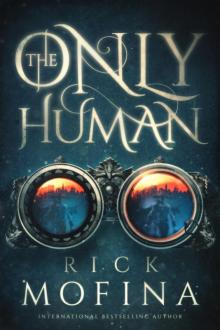 The Only Human
The Only Human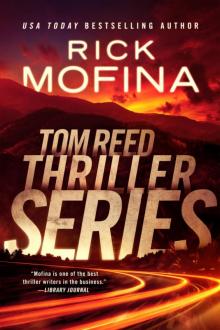 Tom Reed Thriller Series
Tom Reed Thriller Series![[Tom Reed and Walt Sydowski 04.0] No Way Back Read online](http://i1.bookreadfree.com/05/tom_reed_and_walt_sydowski_04_0_no_way_back_preview.jpg) [Tom Reed and Walt Sydowski 04.0] No Way Back
[Tom Reed and Walt Sydowski 04.0] No Way Back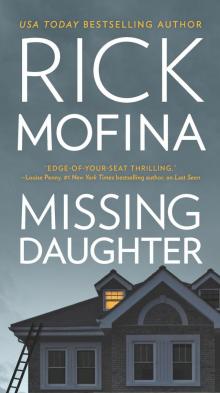 Missing Daughter
Missing Daughter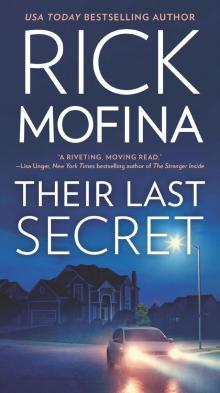 Their Last Secret
Their Last Secret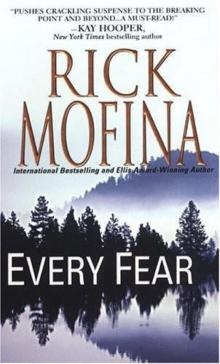 Jason Wade - 02 - Every Fear
Jason Wade - 02 - Every Fear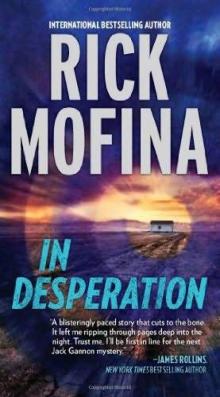 In Desperation
In Desperation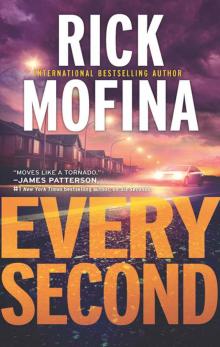 Every Second
Every Second Full Tilt
Full Tilt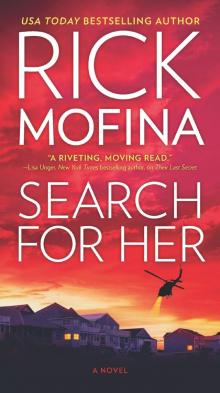 Search for Her
Search for Her The Last Pursuit
The Last Pursuit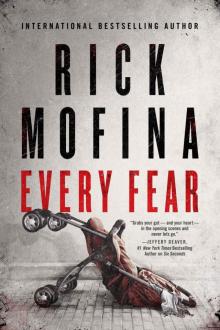 Every Fear
Every Fear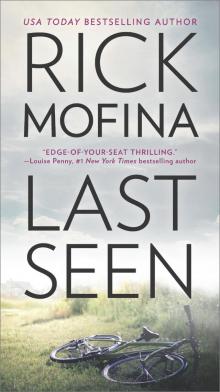 Last Seen
Last Seen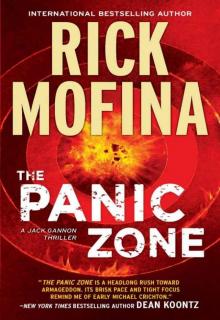 The Panic Zone
The Panic Zone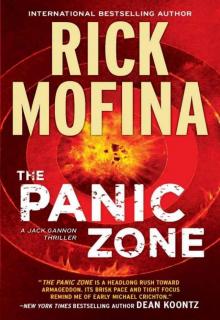 The Panic Zone jg-2
The Panic Zone jg-2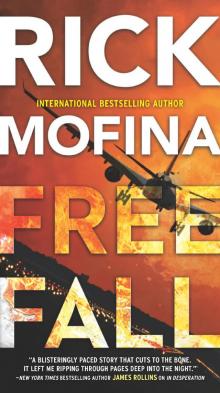 Free Fall
Free Fall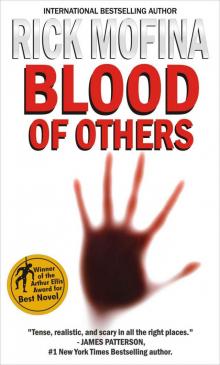 Blood of Others
Blood of Others![[Jason Wade 02.0] Every Fear Read online](http://i1.bookreadfree.com/i1/03/31/jason_wade_02_0_every_fear_preview.jpg) [Jason Wade 02.0] Every Fear
[Jason Wade 02.0] Every Fear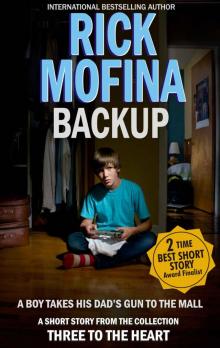 Backup
Backup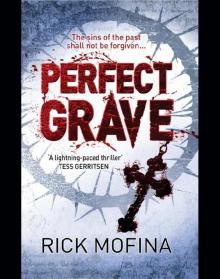 Perfect Grave
Perfect Grave Into the Dark
Into the Dark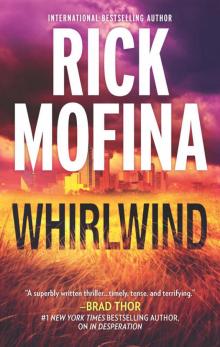 Whirlwind
Whirlwind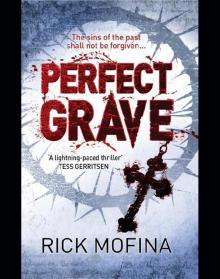 Perfect Grave jw-3
Perfect Grave jw-3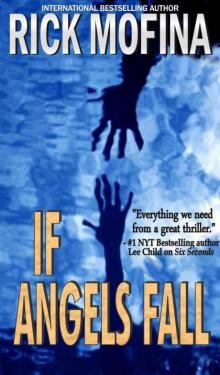 If Angels Fall (tom reed and walt sydowski)
If Angels Fall (tom reed and walt sydowski)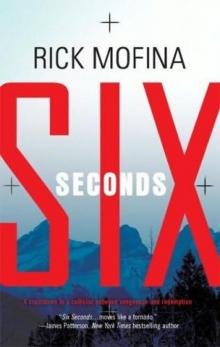 Six Seconds
Six Seconds If Angels Fall
If Angels Fall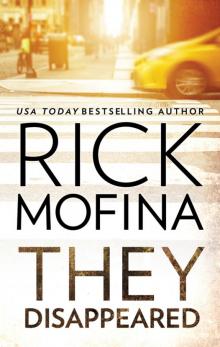 They Disappeared
They Disappeared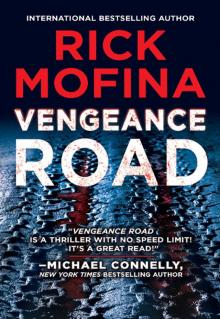 Vengeance Road
Vengeance Road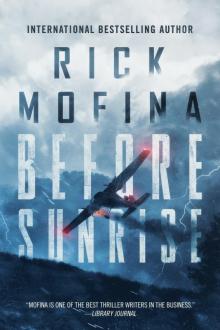 Before Sunrise
Before Sunrise A Lifetime Burning in a Moment
A Lifetime Burning in a Moment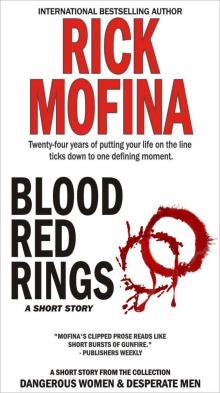 Blood Red Rings (Dangerous Women & Desperate Men)
Blood Red Rings (Dangerous Women & Desperate Men) As Long As We Both Shall Live (Dangerous Women & Desperate Men)
As Long As We Both Shall Live (Dangerous Women & Desperate Men)![[Tom Reed and Walt Sydowski 01.0] If Angels Fall Read online](http://i1.bookreadfree.com/i2/04/12/tom_reed_and_walt_sydowski_01_0_if_angels_fall_preview.jpg) [Tom Reed and Walt Sydowski 01.0] If Angels Fall
[Tom Reed and Walt Sydowski 01.0] If Angels Fall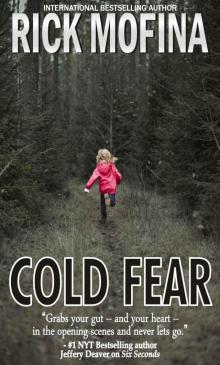 Cold Fear
Cold Fear Be Mine
Be Mine Three Bullets To Queensland
Three Bullets To Queensland